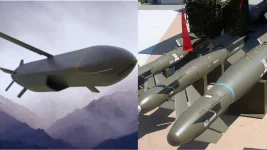The Indian Air Force's (IAF) fleet of sophisticated AH-64E Apache helicopters is facing scrutiny over its performance in India's demanding environmental conditions.
A series of emergency landings throughout 2025, including two within a single week this month, has raised concerns about the fleet's reliability, with many incidents reportedly linked to heat-related technical issues.
The operational challenges were starkly highlighted by two recent events.
On June 13, 2025, an Apache crew received a technical warning in the cockpit, compelling them to perform a precautionary landing in a field in Punjab's Pathankot district.
Just days earlier, on June 6, another Apache on a training mission conducted an emergency landing in Saharanpur, Uttar Pradesh, due to a technical fault.
While the crew in both instances were safe and no one on the ground was injured, the incidents have drawn attention to a recurring problem.
Personnel from the Pathankot-based 125 Helicopter Squadron, known as the "Gladiators," managed the recovery operations for both aircraft.
These events are not isolated but part of a broader pattern observed over the past year.
In a notable incident in April 2024, an Apache helicopter was forced to land in the high-altitude region of Ladakh. The aircraft sustained damage due to the rugged terrain and faced a complex recovery. The landing site, at an altitude of nearly 18,000 feet, made an air rescue impossible.
Helicopter performance is severely degraded in thin air, which provides less aerodynamic lift for the rotor blades and reduces engine power. Consequently, the IAF had to dismantle the helicopter and transport it by road.
Sources familiar with the matter suggest that thermal stress is a significant factor in these incidents.
The AH-64E Apache is packed with advanced electronics, including the Modernized Target Acquisition Designation System (MTADS) and the Longbow Fire Control Radar. While formidable, these systems generate considerable heat.
In the extreme temperatures of Indian summers or the unique conditions of high-altitude deserts like Ladakh, the helicopter's components, particularly its electrical and power systems, are placed under immense strain. This can lead to system warnings that compel pilots to land as a safety measure to prevent further damage.
The IAF inducted 22 Apache helicopters between 2019 and 2020 as part of a ₹14,910 crore ($2.1 billion) deal signed with Boeing in 2015.
These assets are a vital component of India's defence strategy, stationed at key airbases in Pathankot and Jorhat to support operations along the borders with Pakistan and China.
Armed with Hellfire air-to-ground missiles, Stinger air-to-air missiles, and a 30mm chain gun, their role in providing precision firepower is critical. The fleet's strategic value was reportedly demonstrated during military operations in May 2025.
The reliability concerns extend beyond the Air Force, as the Indian Army is also slated to operate the attack helicopter.
The Army's first Apache unit, the 451 Aviation Squadron, was established in March 2024 but is still awaiting the delivery of its six helicopters. The delay has been attributed to global supply chain disruptions and specific concerns regarding the performance of the helicopter's electrical power generators, echoing the potential issues faced by the IAF's current fleet.
These recurring incidents raise important questions for military planners about maintenance protocols and potential adaptations required to ensure the Apache fleet remains a dependable asset in India's varied and challenging operational environments.



